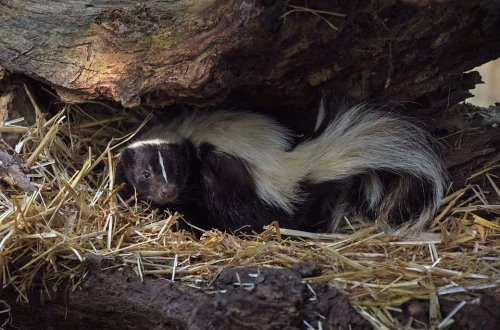Summary:
Integrated Pest Management (IPM) is a science-based, eco-friendly approach to controlling pests that minimizes risks to human health and the environment. It combines biological, cultural, physical, and chemical tools in a coordinated strategy to manage pest populations effectively. Farmers, homeowners, and businesses benefit from IPM by reducing pesticide use, lowering costs, and preventing pest resistance. This method addresses key issues like crop damage, property destruction, and disease transmission, making it essential for sustainable pest control. Readers should care about IPM because it promotes long-term solutions while safeguarding ecosystems and public health.
What This Means for You:
- Implement preventive measures like sealing entry points to reduce pest infestations.
- Use non-chemical methods such as traps or biological controls before resorting to pesticides.
- Monitor pest activity regularly to catch issues early and avoid costly damage.
- Adopt IPM practices to comply with environmental regulations and protect biodiversity.
Integrated Pest Management Explained:
”Integrated Pest Management Explained” Explained:
Integrated Pest Management (IPM) is a holistic approach to pest control that focuses on long-term prevention and management rather than relying solely on chemical treatments. It involves understanding pest life cycles, monitoring pest populations, and applying a combination of strategies tailored to the specific situation. IPM prioritizes environmentally friendly methods, such as biological controls (e.g., introducing natural predators) and cultural practices (e.g., crop rotation), while using pesticides only as a last resort. This method ensures effective pest control while minimizing harm to humans, beneficial organisms, and ecosystems.
IPM is not a one-size-fits-all solution but a dynamic process that adapts to changing pest pressures and environmental conditions. It integrates scientific research, pest behavior studies, and stakeholder collaboration to achieve sustainable results. By addressing the root causes of pest problems, IPM reduces the need for repeated interventions and promotes healthier environments.
Types of Pest Issues:
Pests can be broadly classified into agricultural pests, urban pests, and invasive species, each requiring unique management strategies under IPM. Agricultural pests, such as aphids and corn borers, threaten crop yields and food security. Urban pests, like rodents and cockroaches, pose health risks and damage property. Invasive species, such as the emerald ash borer, disrupt ecosystems and are often regulated by state and federal laws.
Federal laws like the Federal Insecticide, Fungicide, and Rodenticide Act (FIFRA) govern pesticide use, while state-specific regulations address local pest issues. For example, California’s Department of Pesticide Regulation enforces strict guidelines to protect public health and the environment. IPM aligns with these regulations by promoting safer, sustainable pest control practices.
Pests can also be categorized by their invasiveness, lifecycle, and the damage they cause. Understanding these classifications helps in selecting the most effective IPM strategies. For instance, periodic monitoring and habitat modification might suffice for low-risk pests, while high-risk pests may require targeted chemical treatments.
Common Pest Control Methods:
IPM employs a range of methods to manage pests effectively. Biological controls, such as introducing beneficial insects like ladybugs to control aphids, are a cornerstone of IPM. Cultural practices, including crop rotation and proper waste management, disrupt pest habitats and reduce infestations. Mechanical controls, like traps and barriers, physically prevent pests from accessing vulnerable areas.
Chemical controls are used judiciously in IPM, with preference given to low-impact pesticides that target specific pests. For example, pheromone traps attract and eliminate male insects, reducing reproduction rates. Successful IPM strategies often combine multiple methods for maximum effectiveness, such as using resistant crop varieties alongside biological controls.
Risks and Consequences:
Ignoring pest issues or relying solely on chemical treatments can have severe consequences. Pests can destroy crops, damage property, and spread diseases like Lyme disease and malaria. Overusing pesticides leads to pest resistance, environmental contamination, and harm to non-target organisms like pollinators. These risks threaten food security, public health, and biodiversity.
Without IPM, pest control becomes a reactive process, resulting in higher costs and lower effectiveness. For instance, uncontrolled rodent infestations can lead to structural damage and disease outbreaks in urban areas. Adopting IPM not only mitigates these risks but also ensures compliance with environmental regulations, avoiding legal penalties.
Choosing a Pest Control Service:
Selecting a qualified pest control service is crucial for effective IPM implementation. Look for providers with expertise in IPM and a proven track record of solving pest issues sustainably. They should offer comprehensive services, including inspection, monitoring, and tailored solutions. Experience with local pest species and regulations is essential, as pest behavior and legal requirements vary by region.
Ensure the service uses environmentally friendly methods and prioritizes non-chemical controls. A reputable provider will educate you on preventive measures and long-term strategies. Read reviews, ask for references, and verify certifications to make an informed decision. Investing in a skilled IPM expert ensures lasting results and protects your health, property, and the environment.
People Also Ask About:
- What is the goal of Integrated Pest Management? The goal of IPM is to manage pest populations effectively while minimizing risks to humans, the environment, and non-target organisms. It achieves this through a combination of preventive measures, monitoring, and targeted interventions.
- How does IPM differ from traditional pest control? Traditional pest control often relies heavily on chemical treatments, whereas IPM emphasizes prevention, biological controls, and non-chemical methods, using pesticides only as a last resort.
- Is IPM more expensive than conventional pest control? While IPM may require an initial investment in monitoring and preventive measures, it reduces long-term costs by preventing recurrent infestations and minimizing pesticide use.
- Can IPM be used in homes and businesses? Yes, IPM is applicable in various settings, including homes, schools, offices, and farms. It involves sealing entry points, maintaining cleanliness, and using traps or biological controls.
- What role do pesticides play in IPM? Pesticides are used selectively in IPM, targeting specific pests at specific times to minimize environmental impact. They are considered only after other methods have been exhausted.
Expert Opinion:
Integrated Pest Management is the future of sustainable pest control, offering a balanced approach that protects both human health and the environment. As pests adapt to changing climates and human activities, IPM provides a flexible framework to address emerging challenges. It is essential to prioritize preventive measures and educate stakeholders about the importance of eco-friendly practices. By adopting IPM, we can reduce reliance on harmful chemicals and build healthier, more resilient communities.
Related Key Terms:
- Integrated Pest Management for homes
- Sustainable pest control methods
- Biological pest control solutions
- IPM strategies for farms
- Eco-friendly pest management
- State-specific IPM regulations
- Benefits of Integrated Pest Management
Pest Control Disclaimer
This content is for educational purposes only and does not replace professional pest inspection, treatment, or safety advice. Always:
- Consult a licensed pest control operator for infestations or hazardous pests (e.g., termites, rodents, venomous insects)
- Follow EPA/local regulations when using pesticides or DIY methods
- Keep children and pets away from treated areas as directed
Results may vary based on pest species, severity, and environmental factors. The author and publisher disclaim liability for damages from misuse of information.
*Featured image sourced by Pixabay.com



